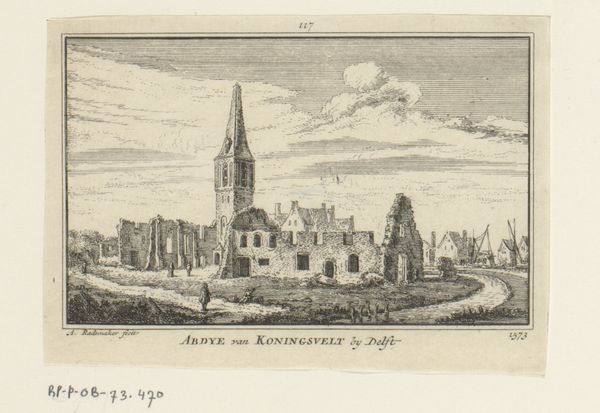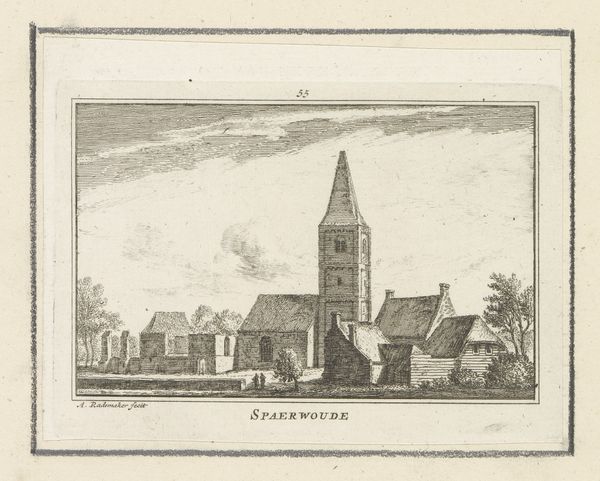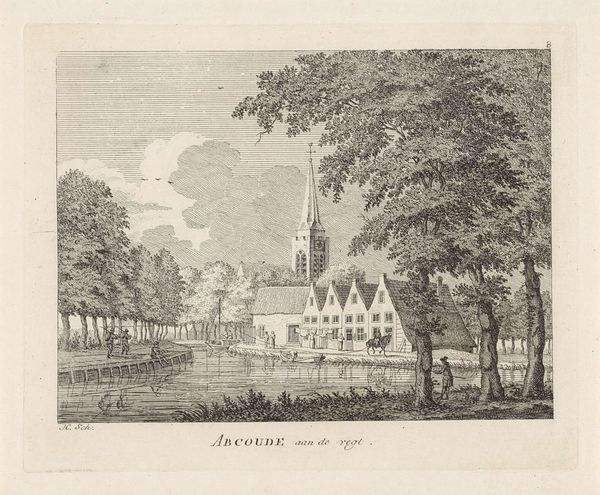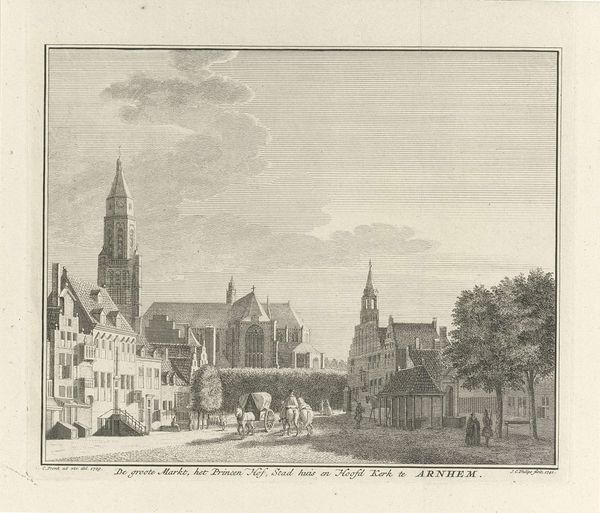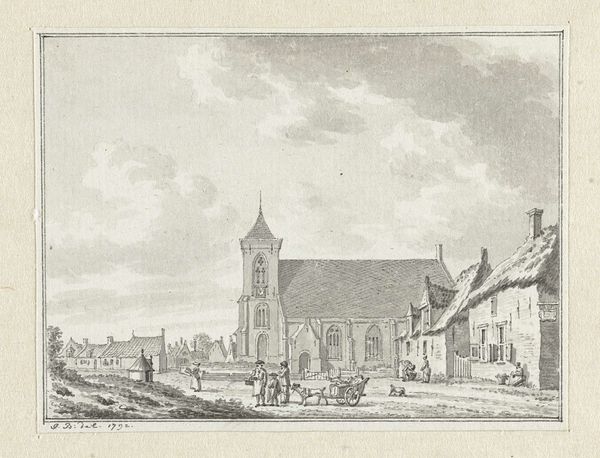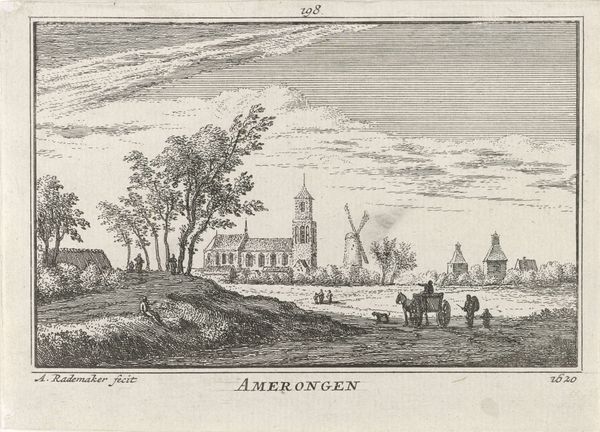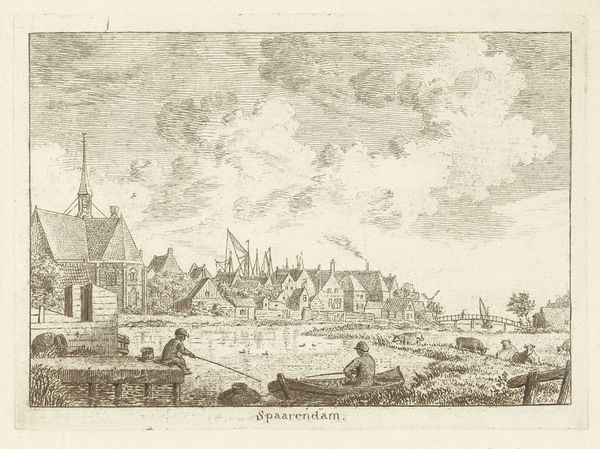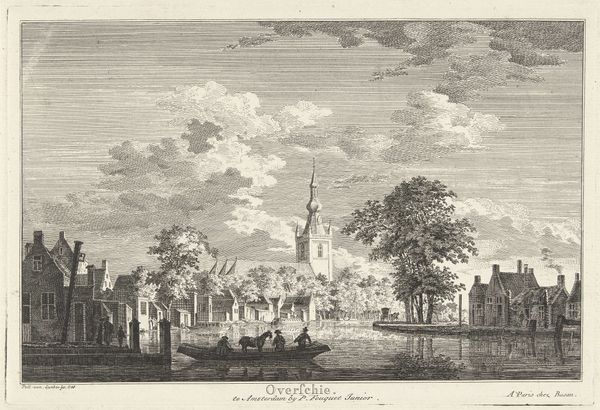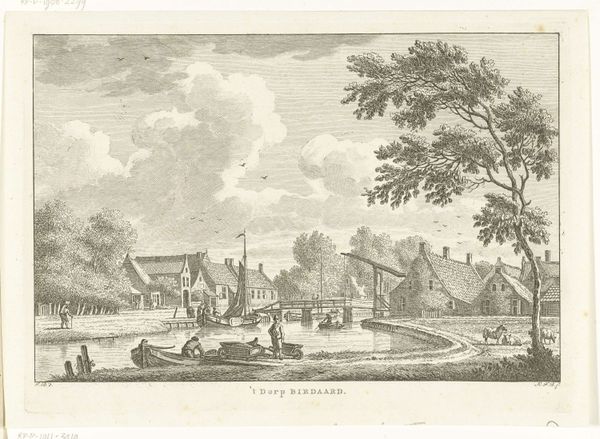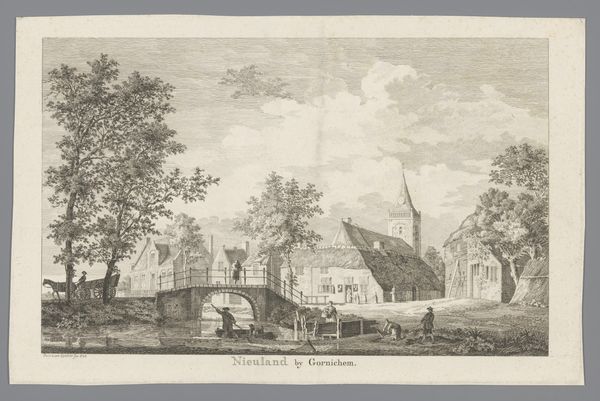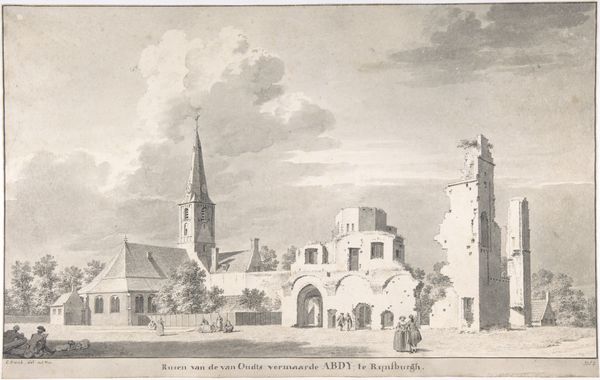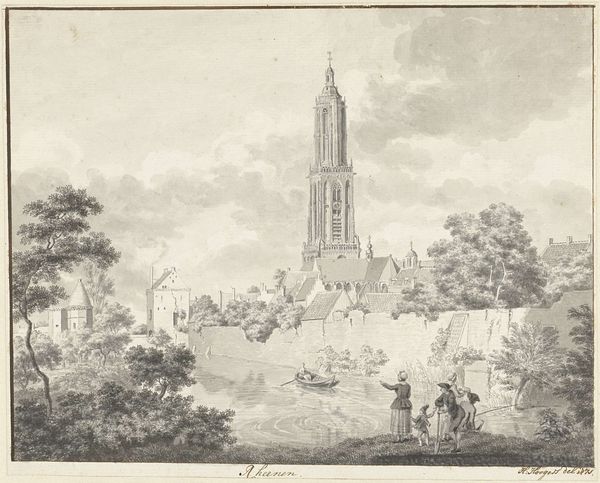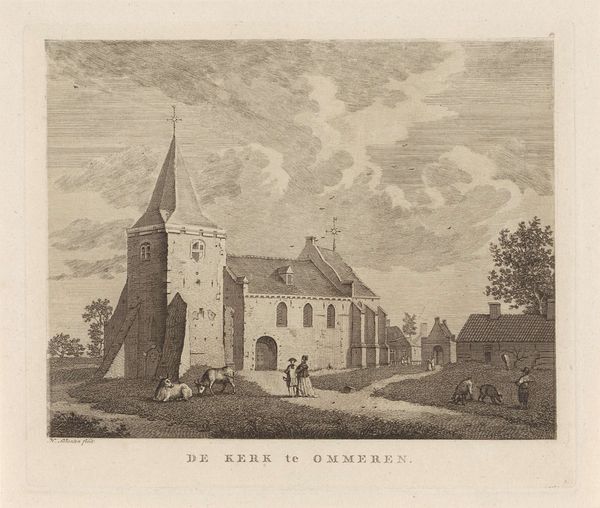
Dimensions: height 161 mm, width 210 mm
Copyright: Rijks Museum: Open Domain
Hendrik Spilman made this print of the ruined Abbey of Rijnsburg sometime in the 1700s. It's made using etching, a printmaking technique that relies on the controlled corrosion of metal. Spilman likely coated a copper plate with wax, then scratched away the wax to expose the metal. This plate was then bathed in acid, which bit into the exposed lines. By repeating this process, Spilman could achieve varying depths of line, creating a range of tones in the final print. Consider the labor involved: from mining and refining the copper, to preparing the plate, to the skilled hand-work of etching. Printmaking was a key technology in the rise of capitalism, allowing images to be reproduced and distributed widely, shaping public opinion and fueling consumer culture. So, next time you see a print, remember that it's not just an image, it's also a product of industry, skill, and a whole lot of work.
Comments
No comments
Be the first to comment and join the conversation on the ultimate creative platform.
